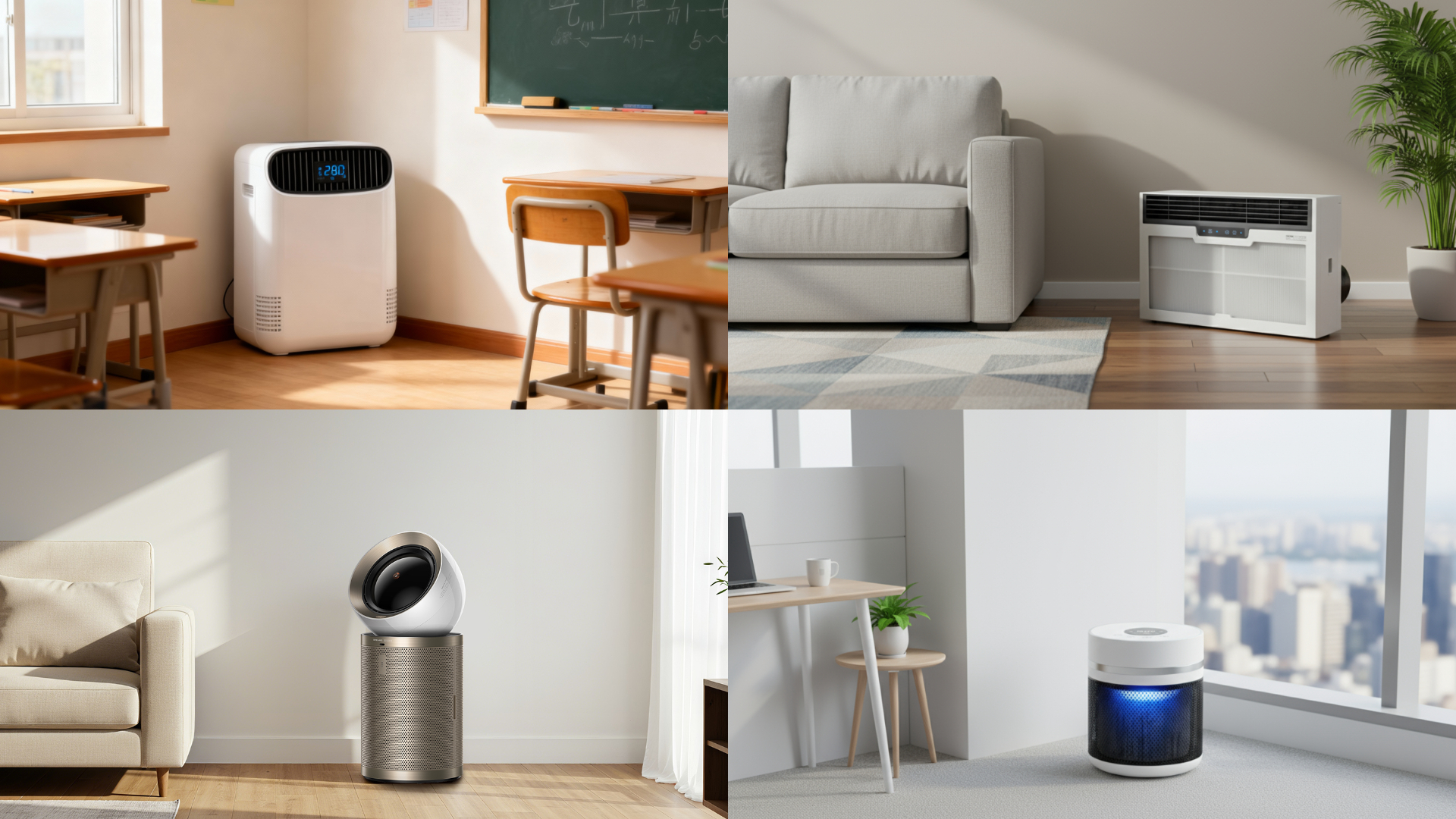
Ever find yourself standing in front of rows of air purifiers, wondering which one will actually work for your home? With so many technologies promising fresher air, it can be overwhelming to choose the right one.
Yet, indoor air quality is something you can’t afford to ignore, from dust and allergens to odors and airborne microbes, what you breathe indoors impacts your health and even your skin.
The air purifier you choose could mean the difference between breathing clean air and harmful pollutants.
This guide breaks down six common types of air purifiers, how they work, their pros and cons, and which situations they suit best. Whether you’re targeting pet dander, smoke, or everyday household pollutants, you’ll have a clear picture by the end.
Table of Contents
- HEPA Air Purifiers
- Activated Carbon Air Purifiers
- UV-C Air Purifiers
- Ionic Air Purifiers
- Ozone Generators
- Hybrid Air Purifiers
- Conclusion
HEPA Air Purifiers
HEPA air purifiers are the lifeblood of modern air purification technology. Scientists developed them in the 1940s to contain radioactive particles. They are remarkable because they catch at least 99.97% of particles as small as 0.3 microns in the United States standard. The 0.3-micron size isn’t random—it’s the “most penetrating particle size” (MPPS), which means these particles are the hardest to catch.
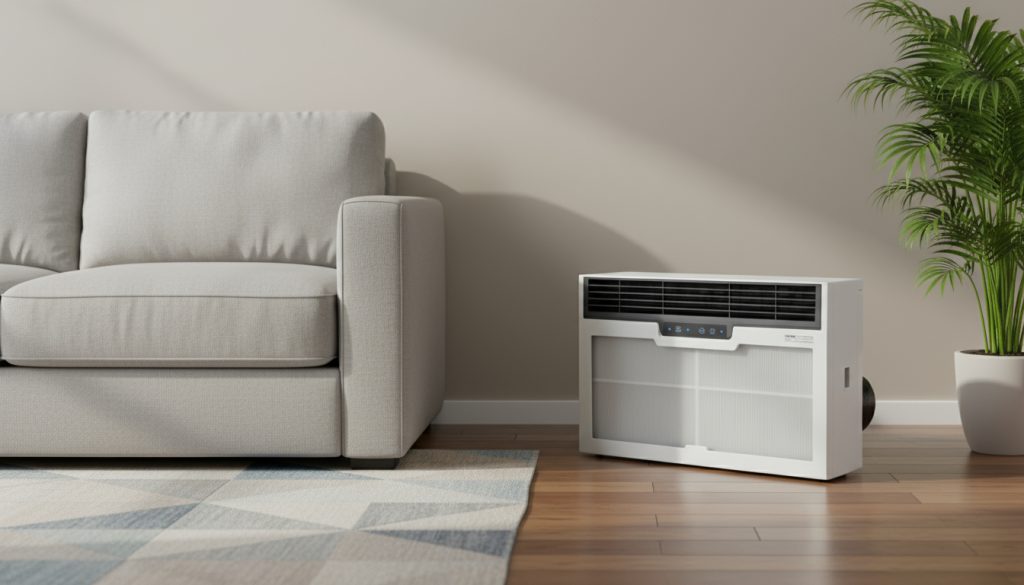
HEPA Air Purifiers Pros
- Exceptional Particle Removal: Catches 99.97-99.99% of airborne particles equal to or larger than 0.3 microns.
- Effective Against Allergens: Removes dust, pollen, mold spores, pet dander, and other common allergens.
- Health Benefits: Cuts down allergy and asthma symptoms by removing triggers from the air.
- No Harmful Byproducts: Unlike other purification technologies, HEPA filters don’t produce ozone or other harmful emissions.
- Virus and Bacteria Reduction: Traps most airborne pathogens, including some viruses and bacteria.
HEPA Air Purifiers Cons
- Limited Gas Filtration: Can’t remove volatile organic compounds (VOCs), odors, or gases without extra filtration technologies.
- Regular Maintenance Required: You need to replace filters every 6-12 months in commercial settings or every 2-3 years at home.
- Potential Noise: Some units make a constant humming or buzzing sound.
- Initial Cost: Quality HEPA purifiers cost anywhere from a few hundred to several thousand dollars.
- Size Limitations: Only filters particles down to 0.3 microns well, though diffusion helps catch some smaller particles.
Best Use Cases for HEPA Air Purifiers
HEPA purifiers work best in places where particle reduction matters most. They are a great way to get clean air in:
- Homes with allergy or asthma sufferers
- Spaces with pets that produce dander
- Areas with high pollen counts
- Hospitals and medical facilities
- Rooms needing protection from airborne pathogens
People with respiratory conditions can breathe easier as HEPA filtration substantially reduces airborne triggers. These devices can also cut down particulate matter during wildfire season or in polluted areas.
Activated Carbon Air Purifiers
Activated carbon air purifiers lead the pack when it comes to fighting odors in air purification. These specialized filters take a different approach from HEPA filters that catch particles. They target gases and smells that would normally pass through mechanical filtration.
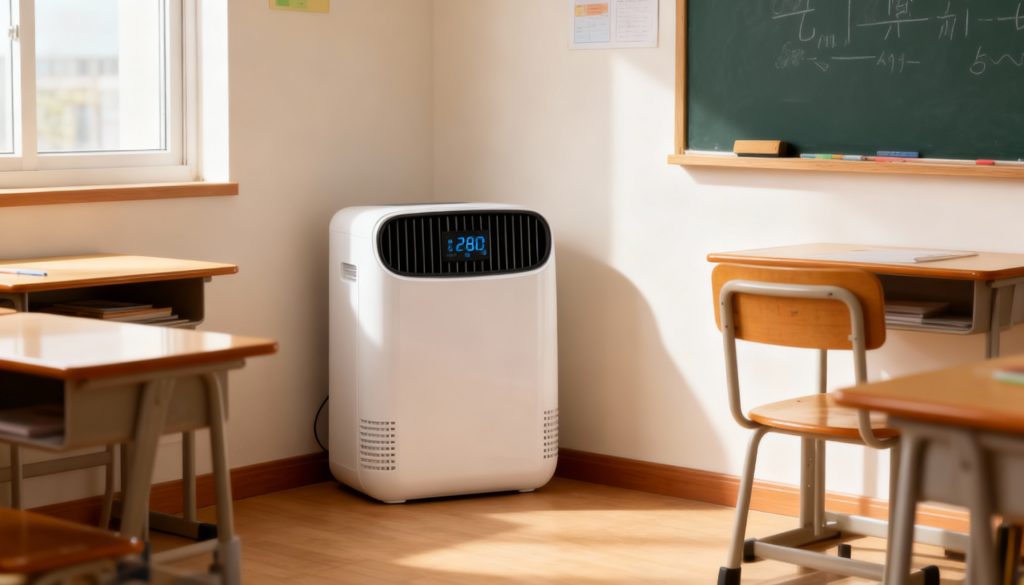
How Activated Carbon Air Purifiers Work
Activated carbon filters use a process called adsorption, different from absorption. During adsorption, pollutant molecules adhere to the carbon’s outer surface rather than penetrating into it. Special processing makes the carbon very porous, which creates millions of tiny pores and tunnels. This results in an amazing surface area—often hundreds of square meters in just one gram. The massive surface area pulls in airborne chemicals and odors like a magnet.
Picture the activated carbon filter as an ER treatment for air. Hospitals use charcoal to neutralize drugs in patients’ stomachs, and these filters work similarly by catching and neutralizing airborne pollutants. The filter’s effectiveness grows with the amount of carbon it contains.
Activated Carbon Air Purifiers Pros
- Superior Odor Elimination: Removes cooking smells, pet odors, tobacco smoke, and musty odors.
- VOC Removal: Traps volatile organic compounds from paints, cleaning products, furniture, and building materials.
- Chemical Filtration: Catches formaldehyde, benzene, toluene, and other harmful chemicals found in everyday items.
- No Harmful Byproducts: Creates no ozone or other dangerous emissions.
- Complements HEPA Filtration: Works with particle filters to clean air better.
Activated Carbon Air Purifiers Cons
Carbon filters shine at gas filtration but have precise limits. They can’t catch dust, pollen, pet dander, or other allergens without extra filtration technologies. The carbon gets full faster than mechanical filters and needs replacement every 3-6 months. Quality matters too—many budget options have too little carbon (less than a pound), making them useless for serious air quality problems.
Best Use Cases for Activated Carbon Air Purifiers
These filters truly demonstrate their value in specific situations. Smokers and their families benefit from the power of carbon filtration to reduce tobacco chemicals—over 7,000 compounds, including 97 different volatile organic compounds. Homes with pets, damp basements, or cooking odors see big improvements. People living in cities face higher levels of gaseous pollutants from vehicles and factories, making carbon filtration a must-have.
UV-C Air Purifiers
UV-C air purifiers make use of high-energy ultraviolet light to destroy microorganisms. This offers a different approach compared to filtration-based systems. The active disinfection capabilities of these systems fascinate me as a researcher who has studied air purification technologies of all types.
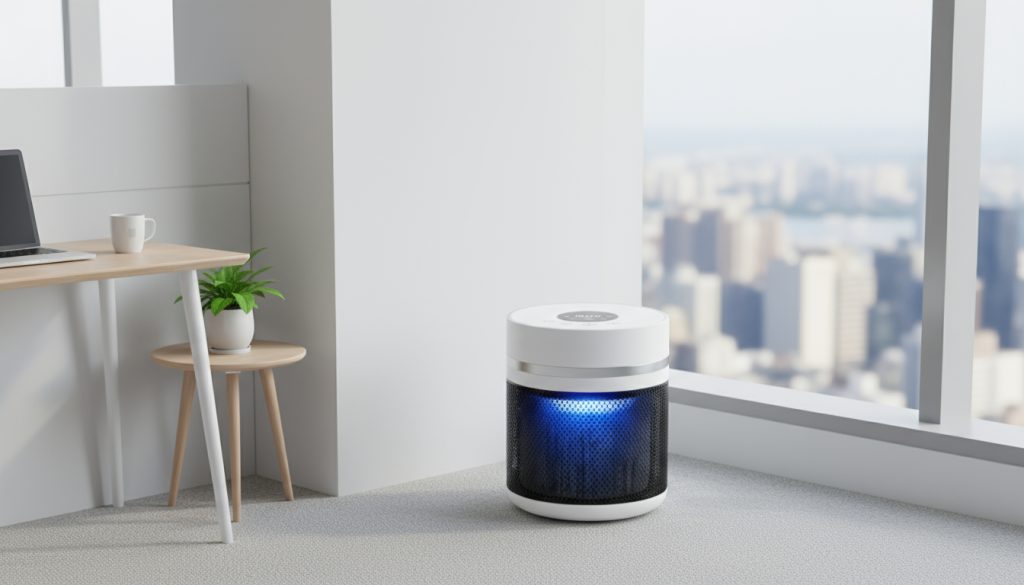
How UV-C Air Purifiers Work
UV-C air purifiers use ultraviolet germicidal irradiation (UVGI) technology to kill or neutralize airborne pathogens. These devices use UV-C light with a wavelength of 254 nm—a range that works well for disinfection. The process is both simple and advanced: air flows through the purifier into a chamber where UV-C light damages the DNA and RNA of microorganisms. This disrupts their reproduction cycle.
The light breaks chemical bonds in the genetic material of bacteria, viruses, and mold spores, which makes them harmless. Most home units use mercury lamps to create UV-C light, though newer options are becoming available. Many systems also include a pre-filter to catch larger particles alongside the UV-C component that destroys pathogens.
UV-C Air Purifiers Pros
- Effective Pathogen Destruction: Disinfection levels can reach above 95% in the right conditions
- Chemical-Free Operation: Air gets sanitized without cleaning chemicals
- Complements HEPA Filtration: Creates “double-barrier” protection with particle filtration
- Healthcare-Grade Technology: Shares the same disinfection methods used in hospitals
- Continuous Protection: Maintains lower pathogen levels through constant operation
UV-C Air Purifiers Cons
UV-C purifiers have important limitations despite their benefits. Pathogens need several seconds of exposure to become neutralized—much longer than the time air usually spends in the unit. These devices can’t remove particulate matter, VOCs, or other gases by themselves.
Some UV-C units might produce ozone as a byproduct, which could create health risks. The costs to install and maintain these units can be high, and bulbs need replacement after 8,000 hours. Marketing claims often overstate how well these units work, and there’s little regulation.
Best Use Cases for UV-C Air Purifiers
UV-C technology excels in specific situations. Healthcare facilities are the main users since they need to reduce airborne disease transmission. Homes with people who have weak immune systems or during disease outbreaks benefit a lot.
Other purification technologies are more effective at removing allergens or chemical pollutants. Many people suggest that UV-C complements, rather than replaces, primary air purification in most homes.
Ionic Air Purifiers
Air purifiers that utilize electrical charges to clean the air offer a unique approach among air purifiers of all types. These devices work differently from the mechanical or light-based systems we discussed earlier.
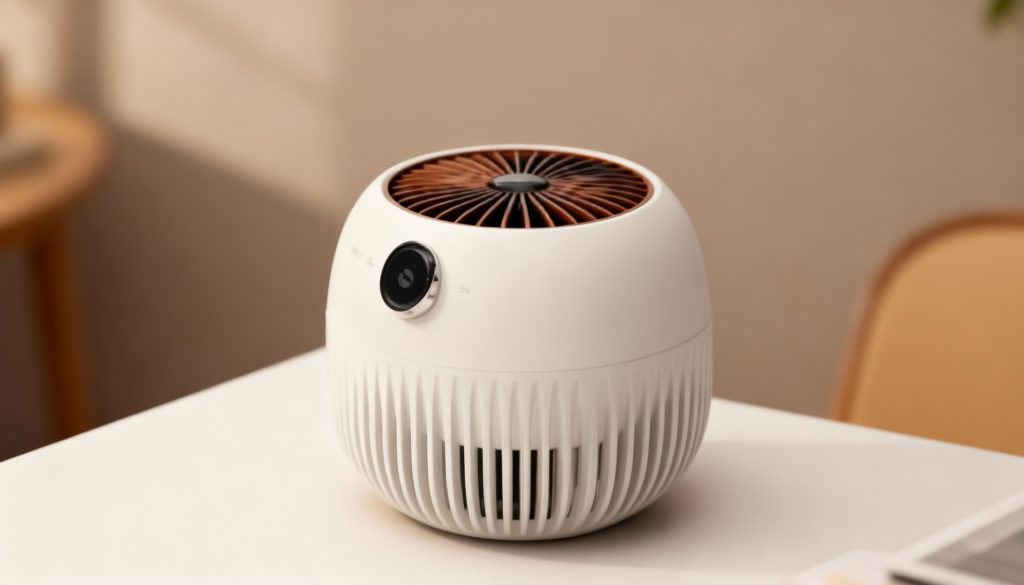
How Ionic Air Purifiers Work
Ionic purifiers create negatively charged ions that work like tiny magnets in your breathing space. The ionizers inside these devices use electrical energy to produce negative ions—molecules with an extra electron. These ions float through the air and quickly find positively charged particles such as dust, pollen, pet dander, and certain bacteria.
The negative ions stick to these airborne contaminants and give them a negative charge. This makes the pollutants cluster together into heavier groups that can’t stay floating in the air. These particles then drop to floors and surfaces where you can clean them up, or they stick to collection plates inside the device.
Ionic Air Purifiers Pros
- No Filter Replacement: Most ionic purifiers don’t need regular filter changes, making them affordable to run long-term
- Quiet Operation: These devices run silently and clean your air without making noise
- Energy Efficiency: They use less electricity than fan-based purifiers
- Effective Against Small Particles: Research shows these purifiers can cut aerosol exposure by almost 100% after running for 1.5 hours in enclosed spaces
- Compact Design: Their size runs smaller than regular filter-based units
Ionic Air Purifiers Cons
The ionization process creates ozone as a byproduct, which can harm human health. The EPA labels ozone as a toxic gas that damages lungs, triggers asthma attacks, and might increase the risk.
These devices can’t remove gases, odors, or volatile organic compounds (VOCs) effectively. Units without collection plates simply make particles fall onto nearby surfaces, leaving dirty walls and furniture that need regular cleaning.
Best Use Cases for Ionic Air Purifiers
These purifiers work best in small indoor spaces with high surface-to-volume ratios. They excel at reducing dust buildup and help control allergens like pollen and pet dander. Someone looking for quiet operation might want an ionic unit alongside their existing filtration systems.
Ozone Generators
Ozone generators stand out as the most debated type of air purifier. Health authorities strongly warn against using them where people are present.
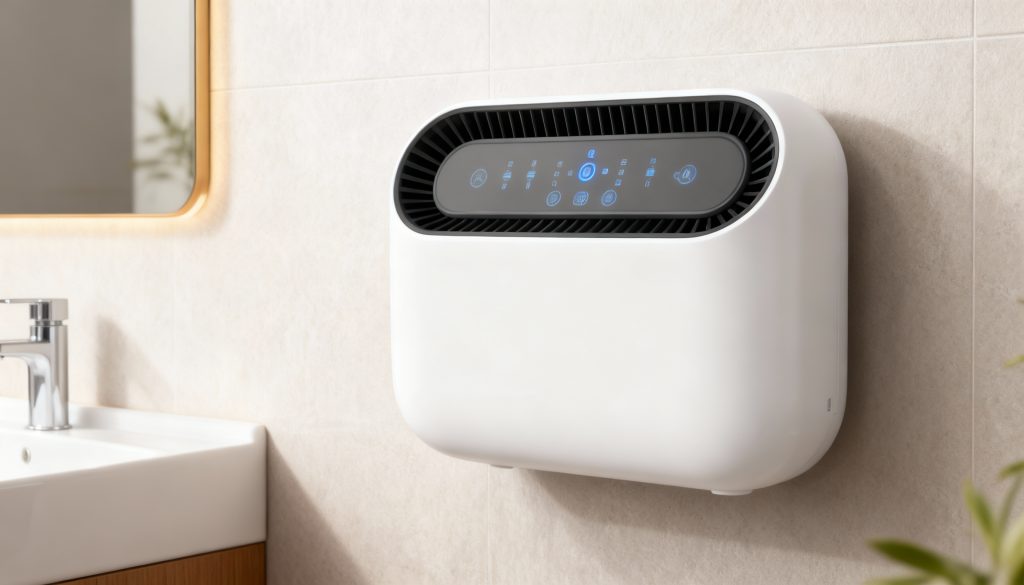
How Ozone Generators Work
These devices create ozone (O₃), a molecule made up of three oxygen atoms. The regular oxygen we breathe (O₂) differs from ozone. The extra oxygen atom in ozone can break away and attach to other molecules, altering their chemical structure. The generator pulls oxygen from the air and charges it electrically. This process lets oxygen molecules transform into ozone. The ozone then breaks down pollutants through oxidation. Many manufacturers try to make ozone sound harmless by calling it “activated oxygen,” “super oxygenated,” or “energized oxygen”.
Ozone Generators Pros
- These devices can remove intense smoke, mold, and pet odors in empty spaces
- They attack odor particles directly instead of covering them up
- Under specific conditions, they kill certain bacteria, viruses, and molds
Ozone Generators Cons
The health risks from ozone generators are serious. The EPA labels ozone as a toxic gas that harms the lungs. People exposed to even small amounts of ozone suffer chest pain, coughing, throat irritation, and breathing problems. Research shows these devices barely remove indoor air contaminants at levels considered safe for health. The ozone can mix with existing chemicals and create dangerous substances like formaldehyde.
Best Use Cases for Ozone Generators
The health risks mean you should only use ozone generators in empty spaces for specific tasks:
- Getting rid of odors in vacant properties
- Treating mold in empty buildings
- Restoring smoke damage with proper controls
The California Air Resources Board (CARB) only approves ozone generators for industrial use where people won’t be exposed to harmful effects.
Hybrid Air Purifiers
Hybrid air purifiers blend the best features of multiple technologies to create an “all-in-one” solution for clean air. These units can handle more contaminants than any single-technology system.
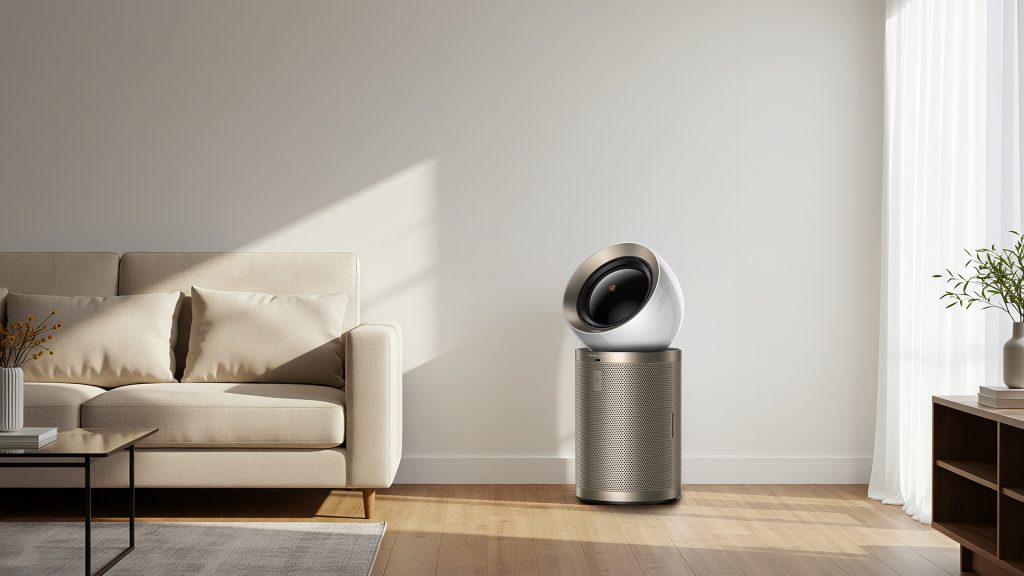
How Hybrid Air Purifiers Work
These purifiers combine several filtration technologies—typically HEPA, activated carbon, and UV-C light—to thoroughly clean the air. A permanent pre-filter catches larger particles like hair and dust. The HEPA filter then traps tiny particulates down to 0.3 microns. The activated carbon layer removes gases and odors, while UV-C light kills microorganisms. Some advanced models incorporate features such as photocatalytic oxidation with titanium dioxide to eliminate residual pollutants.
Hybrid Air Purifiers Pros
- Versatile Air Cleaning: Removes particles, gases, and pathogens at once to improve air quality
- High Efficiency: Multiple cleaning methods work together to remove more airborne contaminants
- Multi-functionality: Many units work as standalone devices or combine air purification with humidification
- Extended Filter Life: Washable prefilters help expensive HEPA components last longer
Hybrid Air Purifiers Cons
- Higher Original Cost: Complex technology makes these units more expensive
- Maintenance Expenses: Different filtration systems need regular component replacements
- Energy Consumption: Multiple systems running together use more electricity
- Operational Noise: Several technologies working at once make these units louder than single-technology options
Best Use Cases for Hybrid Air Purifiers
These units shine in spaces that need thorough air treatment. Medical offices, city apartments, and large rooms benefit most from their ability to remove both particles and odors. Families with young children or individuals with breathing issues find the multi-layered approach of these systems especially helpful.
The Dreame AirPursue PM20 is a great example, with its 4-layer filtration system and Dual Elimination Technology (UVC + Plasma), it tackles everything from dust to microbes in one sleek unit. Picture a single device handling what would otherwise take three machines; that’s the hybrid advantage.
Additionally, it utilizes multiple sensors to monitor pollutants such as PM2.5, PM10, VOCs, and nitrogen dioxide. Its auto mode feature adjusts fan speed according to detected pollution levels.
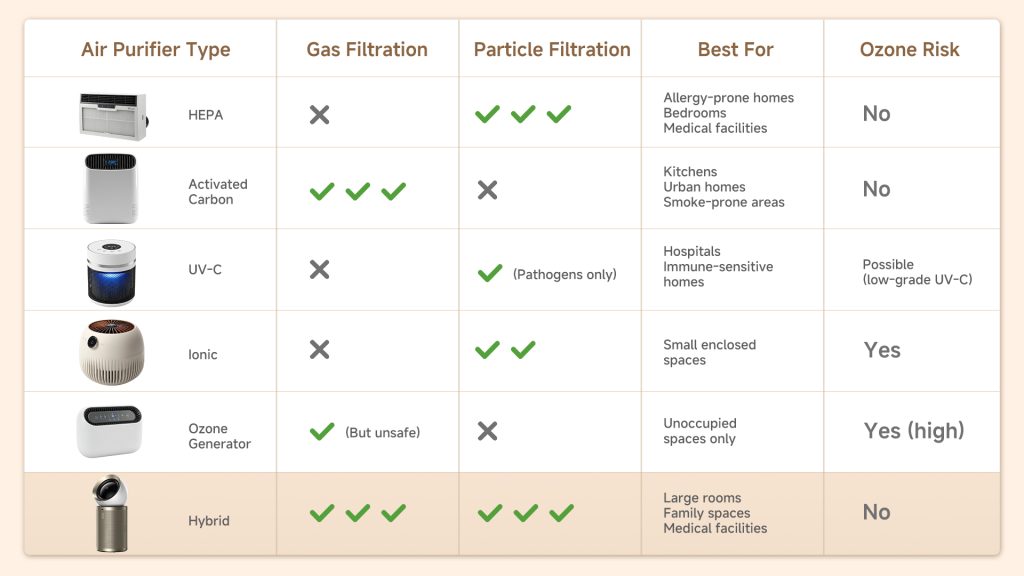
Conclusion
Clean air at home affects our health more than we might think. These six air purifier types offer unique benefits and limitations to improve indoor air quality.
HEPA filters remain the gold standard without doubt. They capture nearly all airborne particles down to 0.3 microns. These work best when combined with activated carbon filters that tackle odors and gases which HEPA technology can’t handle alone.
UV-C purifiers are effective in destroying pathogens, but experts recommend them as supplements rather than standalone solutions. Ionic and electrostatic technologies provide different advantages, though their potential ozone production needs careful thought.
Environmental experts agree on one clear warning – never use ozone generators in occupied spaces because of serious health risks.
Smart hybrid systems represent the future of air purification. These advanced purifiers blend multiple technologies to handle various pollutants and provide live air quality data through your smartphone.
Your specific situation should guide what you buy. People with allergies might want HEPA filtration, while city residents could benefit from activated carbon to curb chemical pollutants. Families with young children or immunocompromised members might add UV-C technology’s protection alongside traditional filtration.
Price plays a vital role, ranging from under $100 for simple models to over $1,000 for premium systems. Filter replacement and maintenance costs can add up substantially over time.
Room size heavily influences your purifier choice. Even top systems don’t work well if they’re too small for your space. Check the recommended coverage area before you buy.
Clean air is an investment in your well-being. Take the time to assess your air quality needs, and explore advanced solutions like those at Dreame to find a unit that keeps your indoor air as clean and safe as possible. It may reduce allergy symptoms, help you sleep better, and create a fresher, more comfortable home. Your lungs will appreciate a smart choice based on this piece about air purifier technologies.